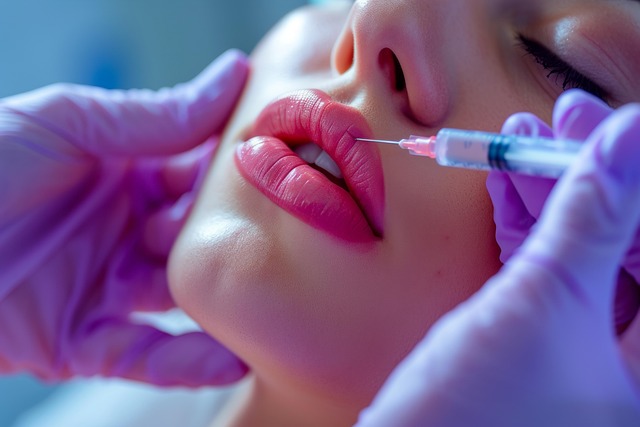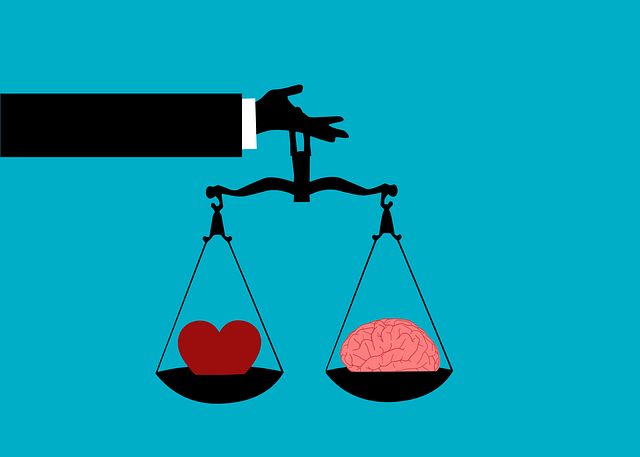This text compares Botox and dermal fillers as cosmetic treatments for wrinkle reduction, highlighting their distinct mechanisms, benefits, duration of results, side effects, costs, and accessibility. Botox, a bacterial neurotoxin, relaxes facial muscles to prevent dynamic wrinkles, offering gradual, natural-looking results for 3-6 months at lower costs. Dermal fillers, using substances like hyaluronic acid, add volume to restore skin contours and smooth static wrinkles, providing longer-lasting (up to 2 years) solutions but at a higher price. The choice between them depends on wrinkle type, desired results, budget, and time commitment. Consulting a dermatologist is crucial for making an informed decision tailored to individual needs.
Botox and dermal fillers are popular anti-aging treatments, each with unique benefits. This guide delves into the world of these cosmetic procedures, focusing on their roles in delaying wrinkles. We’ll explore how Botox relaxes muscles to prevent dynamic lines, while dermal fillers plump skin by adding volume. By comparing botox vs. dermal fillers across understanding, application, results, and safety, this article empowers you to make an informed decision for your skincare journey.
Understanding Botox and Its Anti-Aging Properties

Botox, a neurotoxin derived from bacteria, has gained popularity as a non-invasive cosmetic procedure for delaying wrinkles. Its primary mechanism involves blocking nerve signals that cause muscle contractions, thereby reducing dynamic wrinkle formation. Unlike dermal fillers that add volume and enhance facial contours, Botox focuses on relaxing muscles to prevent lines from deepening over time.
When compared to dermal fillers, Botox offers a different approach to anti-aging. Fillers provide immediate results by adding substance to the skin, while Botox produces gradual, natural-looking results by inhibiting muscle activity. This distinction makes Botox an ideal choice for individuals seeking subtle enhancements and long-lasting prevention of facial lines rather than dramatic transformations.
The Role of Dermal Fillers in Skin Rejuvenation

While Botox is renowned for its ability to smooth fine lines and wrinkles by relaxing facial muscles, another effective anti-aging treatment gaining popularity is dermal fillers. Unlike Botox, which works by paralyzing muscles, dermal fillers enhance skin volume and texture. These injectable substances, often made of hyaluronic acid, are subtly integrated into the skin to fill in hollows and add definition.
The key difference between Botox vs Dermal Fillers lies in their mechanisms and intended effects. Botox focuses on preventing dynamic wrinkle formation by reducing muscle contraction, while dermal fillers aim to restore volume loss and enhance facial contours. Both treatments offer significant advantages for skin rejuvenation, allowing individuals to achieve a more youthful appearance through different approaches.
Key Differences Between Botox and Dermal Fillers

When considering cosmetic procedures to delay wrinkles, understanding the key differences between Botox and dermal fillers is essential. While both are popular treatments for anti-aging, they work in distinct ways. Botox, a protein derived from bacteria, temporarily paralyzes muscles responsible for wrinkle formation. This non-invasive procedure smoothens facial lines and wrinkles by preventing muscle contraction, offering a more youthful appearance. On the other hand, dermal fillers are injectable substances that add volume to the skin, plumping up wrinkles and enhancing facial contours. These fillers, often made of hyaluronic acid or collagen, provide immediate results, filling in deep furrows and adding definition to the face.
The primary distinction lies in their mechanism of action. Botox focuses on muscle relaxation, making it ideal for dynamic wrinkle reduction, especially around the eyes and mouth. Dermal fillers, in contrast, directly add substance to the skin, providing a more permanent solution for deeper wrinkles and enhancing overall facial structure. Each treatment has its advantages, catering to different needs and preferences, ensuring individuals can make informed choices based on their specific concerns.
Choosing the Right Treatment: Factors to Consider

When considering cosmetic treatments like Botox or dermal fillers, it’s crucial to understand your options and choose what best suits your needs. Both procedures are popular for their anti-aging benefits, but they work in different ways. Botox is a neurotoxin that relaxes muscles, reducing dynamic wrinkles caused by facial expressions. It’s ideal for fine lines, crow’s feet, and frown lines. Dermal fillers, on the other hand, add volume to the skin by plugging gaps left by lost collagen or elastin. They’re effective in minimizing deeper static wrinkles, cheek hollowing, and enhancing facial contours.
Several factors should guide your decision between Botox vs dermal fillers. These include the type and severity of wrinkles, desired results, recovery time, cost, and longevity of effects. For instance, Botox offers quicker results for specific types of wrinkles but typically wears off after 3-4 months, while dermal fillers provide longer-lasting solutions (up to 2 years) but take a bit more time to see immediate changes. Consulting with a qualified dermatologist can help you make an informed choice based on your unique circumstances.
The Application Process: What to Expect

The application process for Botox begins with a consultation where your dermatologist or medical professional assesses your skin and determines the best treatment plan. They’ll clean your skin, identify the target areas, and inject small amounts of Botox into specific muscles. This procedure is typically quick, taking around 15-30 minutes, and is usually performed in an outpatient setting. Unlike dermal fillers, which add volume to the skin, Botox works by relaxing muscles, preventing them from contracting and causing wrinkles. This non-invasive approach makes it a popular choice for those seeking to delay or reduce fine lines and wrinkles without surgery.
During your session, you may experience minor discomfort, but most providers offer numbing creams to minimize this. You’ll be able to return to your regular activities soon after, though it’s recommended to avoid strenuous exercise for a few hours. Results typically start to appear within 24-72 hours, reaching their maximum effect around 1-3 weeks post-treatment. Regular follow-up sessions are necessary to maintain the results, with recommendations varying based on individual needs and the specific Botox product used – a key difference compared to dermal fillers which offer longer-lasting effects.
Short-Term vs Long-Term Results: A Comparative Analysis

When considering cosmetic treatments like Botox or dermal fillers for delaying wrinkles, understanding the distinctions between short-term and long-term results is essential. Botox, a neurotoxin that temporarily paralyzes muscle activity, delivers immediate yet transient effects. This makes it ideal for smoothing dynamic lines like frown lines and crow’s feet within weeks after treatment. However, the results typically last 3 to 6 months, necessitating touch-ups to maintain the desired effect.
In contrast, dermal fillers enhance skin volume by filling in wrinkles from the inside out, offering more long-lasting solutions. Depending on the filler type, results can endure for several months to even years. While Botox provides a quick fix for specific areas of concern, dermal fillers cater to deeper, more widespread wrinkles and loss of facial volume. The choice between them depends on individual needs, budget, and desired treatment duration.
Potential Side Effects and Safety Precautions

While Botox is a popular choice for wrinkle reduction, it’s crucial to be aware of potential side effects and take safety precautions. Unlike dermal fillers, which can cause issues like lump formation or uneven skin texture, Botox’s main side effects are typically temporary and mild, such as bruising, swelling, or slight headaches at the injection site. However, more severe but rare reactions may include difficulty swallowing or breathing, which is why it’s essential to choose a qualified healthcare provider for the procedure.
Before undergoing Botox treatment, discuss your medical history with your doctor. Certain conditions like muscle disorders or allergies can affect how your body responds to the toxin. Additionally, be mindful that results vary; Botox’s effects typically last 3-6 months, and repeated treatments are necessary for sustained smoothing of fine lines and wrinkles, offering a more temporary solution compared to dermal fillers’ longer-lasting results.
Cost Comparison and Accessibility

When considering cosmetic procedures, the cost and accessibility of treatments like Botox and dermal fillers are significant factors. In terms of pricing, Botox has established itself as a popular choice due to its relatively lower cost compared to dermal fillers. While the price may vary depending on the region and the amount of product used, Botox treatments are generally more affordable for delaying wrinkles. This affordability makes it an attractive option for those seeking non-invasive beauty enhancements.
In terms of accessibility, both Botox and dermal fillers are widely available at dermatological clinics and specialized spas. However, Botox’s prevalence in the market has led to increased competition, making it easier for consumers to find qualified professionals offering this treatment at reasonable rates. Moreover, as Botox has been a staple in the cosmetic industry for decades, its safety profile is well-documented, ensuring patients can access reliable and effective treatments with minimal risks.
